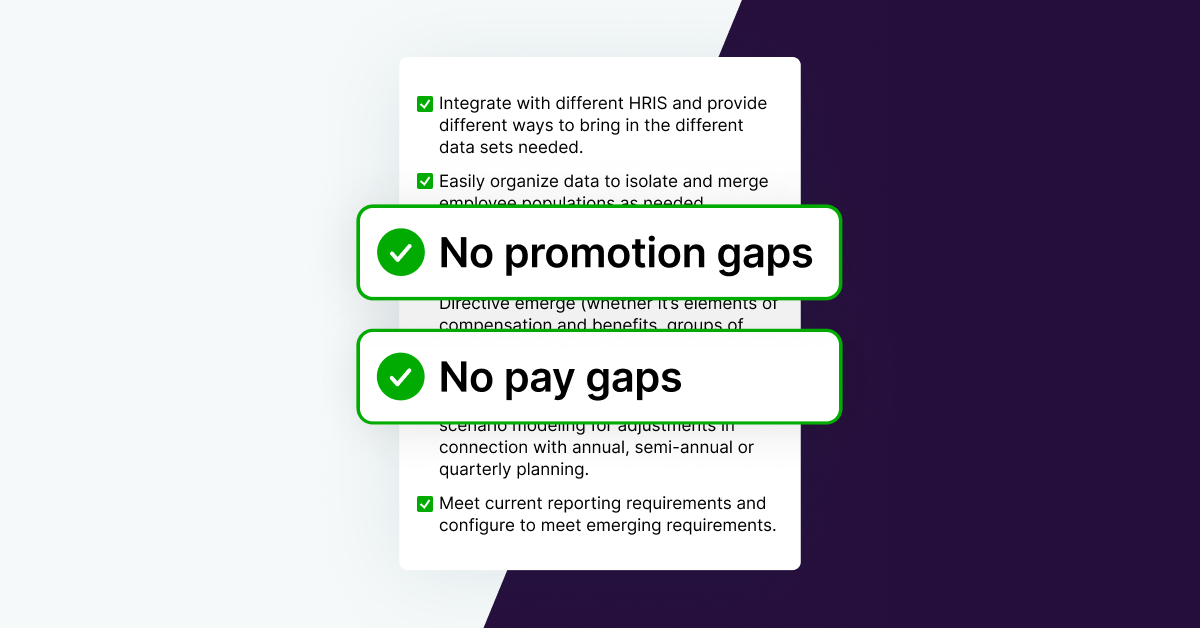Employees, investors, consumers, and legislators are demanding that brands step up — that they pay people fairly across a much broader set of compensation types and demographics and that they’re more transparent about it.
People know the difference between pay equity action and posturing. They believe pay should be fair for all employees regardless of gender, race, age, intersectionality and other employee characteristics. They believe in fair pay across all types of compensation, and companies should make it transparent to truly demonstrate their commitment to fair pay.
People also know that companies experience the same pay problems year after year, and few are making measurable progress and getting it right. They want answers, and they’re rewarding companies that can provide their commitment to fair pay.
The consequences of having a wage gap have never been greater, but neither have the benefits of pay transparency. Here’s why.
Research on pay transparency shows public pressure is growing
Recent research on pay transparency shows that 58% of U.S. employees would consider switching jobs for more pay transparency, 85% of Americans believe it is important for companies to conduct pay analyses, and 51% of global consumers believe CEOs need to make gender and ethnic pay equality a higher priority. And new legislation that requires pay transparency, such New York City’s new law, only makes the drive to get this right more urgent.
Many brands are trying to get ahead of the pressure and talk about pay equity on their own terms, before the media, activist investors, or employees can tell their story for them through salary sharing spreadsheets or public scorecards designed to “name and shame”.
Given this climate of increasing exposure and transparency, silence can also be interpreted as a lack of commitment to DE&I. This adds even more pressure and risk for the brands that opt to keep pay equity and details about their pay gaps behind closed doors.
Traditional approaches to fair pay are failing
Given these heightened expectations and increased risks, mastering pay equity analysis and communications is more important than ever. Unfortunately, traditional approaches fall short. Why?
Manual, once-a-year analyses take a long time, months even, and are outdated before they’re complete. They focus on finding pay disparities after they’ve developed and grown throughout the year, rather than preventing pay inequity in the first place.
Many analyses are limited in scope, focusing on just one or two demographic aspects of the employee population, like gender or race, not all aspects and intersectionalities. They also often analyze only on base compensation, not total compensation. Lastly, the traditional approach to pay equity is led by a siloed legal team and the results are kept under lock and key.
This sort of backward-facing pay equity audits doesn’t help companies gain the insights they need. It doesn’t help them understand how pay is being delivered and what changes to make to their programs and processes to prevent inequities from happening. With stakeholders paying attention and asking hard questions, companies can’t afford to simply check the box on pay equity or stay silent.
How to achieve the new standard for fair pay
The bar has been raised, and we want to help you lead the way. Our team of experts has created resources to help you move the needle on pay equity, including a guide that explains the new standard for fair pay in the workplace and how to implement the four core strategies required to meet it.
Interested in learning more about how Syndio can help you modernize your pay equity strategy? Request a demo.


